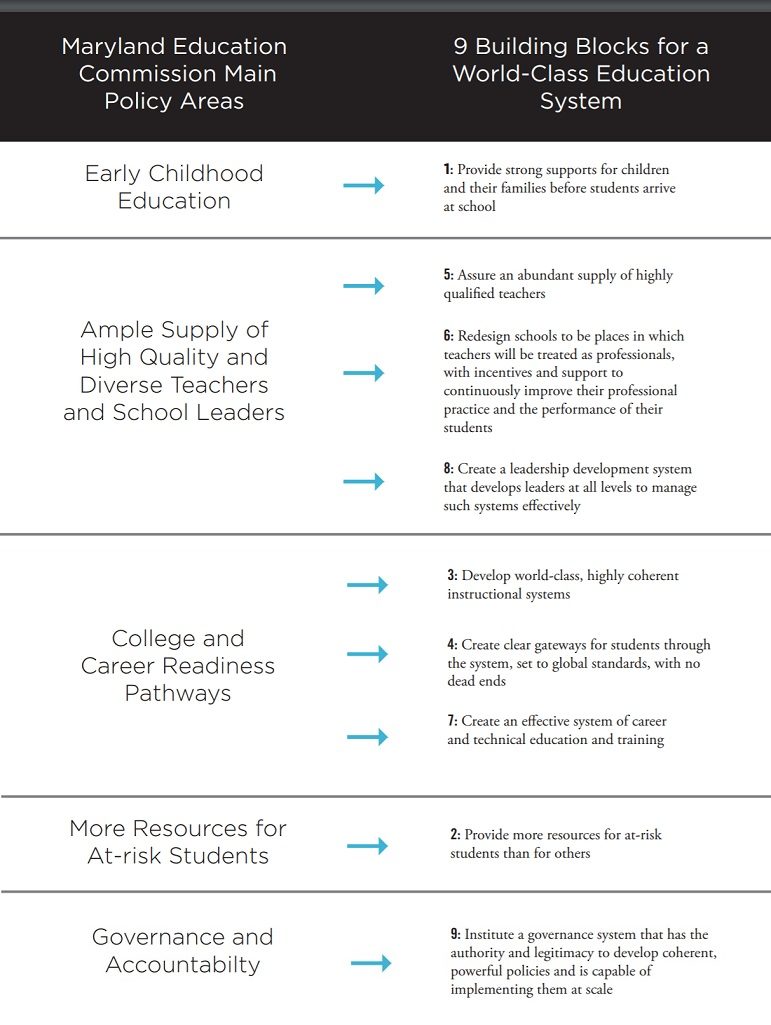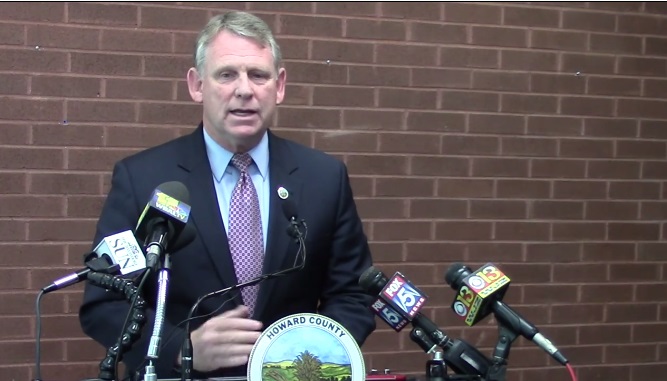By Len Lazarick
The Kirwan Commission on Innovation and Excellence in Education wrapped up its preliminary report Monday during a sometimes contentious discussion over how much the massive $1.3 billion infusion of new education funding from 2002 to 2008 had improved Maryland schools.
The draft preliminary report based on a 16 months of meetings and consultant studies begins with a “Call to Action” that emphasizes how average Maryland schools are when compared to other states and best performing schools in the world.
“Putting it bluntly, despite a significant increase in State funding over the past 15 years, Maryland students still perform in the middle of the pack within the US, which is in the middle of the pack against the rest of the modern world,” says the report.
Some commission members wanted to qualify that and similar statements to give more credit to increased funding from the Thornton Bridge to Excellence aid program.
“We do have to acknowledge the benefit of the Thornton funding,” said David Helfman, executive director of the Maryland State Education Association, the largest teachers union. “We have languished” since 2008, Helfman said. “The challenges and the demographics have changed.”
David Steiner, a commissioner who heads the Johns Hopkins Institute for Education Policy and is also a member of the State Board of Education, said, “I don’t see the argument that there was real improvement.”
Shaking things up
Commission chairman Brit Kirwan, the former university system chancellor, was insistent, “We have to shake up the people of Maryland or nothing is going to happen.”
The arguments went back and forth over what the test scores and other data meant. The commission’s chief staff person, Rachel Hise from the Department of Legislative Services, said some of the arguments oversimplified the issue, suggesting that “If we just had more money, our scores would be better. That’s not the full answer. That’s part of the answer.”
Scott Dorsey, president of Merritt Properties and the only business executive on the commission, said, “Clearly we’re not where we are due to how much we’ve spent — it’s how we’ve been spending it. This is an existential crisis.”
Chester Finn, a long-time education policy expert on the state school board, said, “We’ve been trying to weaken a relatively weak document.” He asked if he could make personal comments in the report, but the commission voted down that idea, saying it would reduce the impact of the report.
“I’m sure everyone in this room wants to change something in this report,” Kirwan said. “I know I do.”
“We have come a long, long way and reached a pretty broad consensus,” he said.
“We’re going to have plenty of time to disagree,” said Sen. Paul Pinsky, vice chair of the education committee. “The next step is going to be a hell of a lot harder.”
In the next step, the commission is creating four or five work groups to meet during the legislative session that begins Wednesday to flesh out specific details and come up with cost estimates that may force changes in the recommendations.
Some of the commission’s more drastic suggestions, like big changes in teacher training, may take a decade to implement.
Legislation this session
The commission does not expect to finish its work until June, but it will propose a small package of six bills this session. They include:
- extending the life of the commission through 2018;
- setting up a career and technical education work group;
- improving a teacher scholarship program already on the books and getting it funded;
- increasing pre-kindergarten expansion grants;
- funding after-school and summer programs for schools with high concentrations of poverty;
- and establishing a teacher recruitment strategy with outreach to the top quarter of high school graduates to encourage them to enter the teaching profession.
Here is a graphic summary of the commission’s main policy areas and its nine building blocks for a world-class education system.







So, it took a large Commission to report on what the more attentive and intelligent Maryland taxpayers already knew… That $1 BILLION didn’t produce what was promised… < sarcasm And more school spending doesn't help when what is causing the decline is still in existence...
The “draft preliminary report” is a muddle and isn’t usable; e.g. immediately after the Table of Contents is Chapter 5. Where are the missing chapters? Why would the report not identify “action officials” i.e., the persons (including in some cases the legislature) and chains of commands directly responsible for implementing recommendations? Why wouldn’t this commission begin its report with a point-by-point assessment that ID’s whether each and every Thornton Commission’s recommendations were implemented and how effectively?
One of my pet peeves is properly using “between” and “among,” and here, too, this report fails. I give it an F overall.
Until the Kirwan Commission has taxpayer representation on it, the recommendations will not be grounded in reality. We have spent billions on education and our gains have been minimal. The outsize influence of teachers unions, while very successful in getting higher and higher compensation for their members, continue to shy away from measurable accountability. I always thought kids came first. Not.
Do these state funds for local school systems allow them to squander other budget money on ineffectual programs like digital learning in Baltimore County and Prince Georges’s County?
State funds are generally based on the “wealth” of the county and so the lion’s share goes to Baltimore City. I’m not sure that they are all earmarked for particular purposes and it makes sense for local jurisdictions to make decisions applicable to their individual needs. The problem is that it appears that money continues to be flung at the educational establishment and the results of this avalanche of funds does not make a measurable difference. It would be interesting to know if an analysis has been done on the success of digital learning programs in BaCo and PG and if not, why?